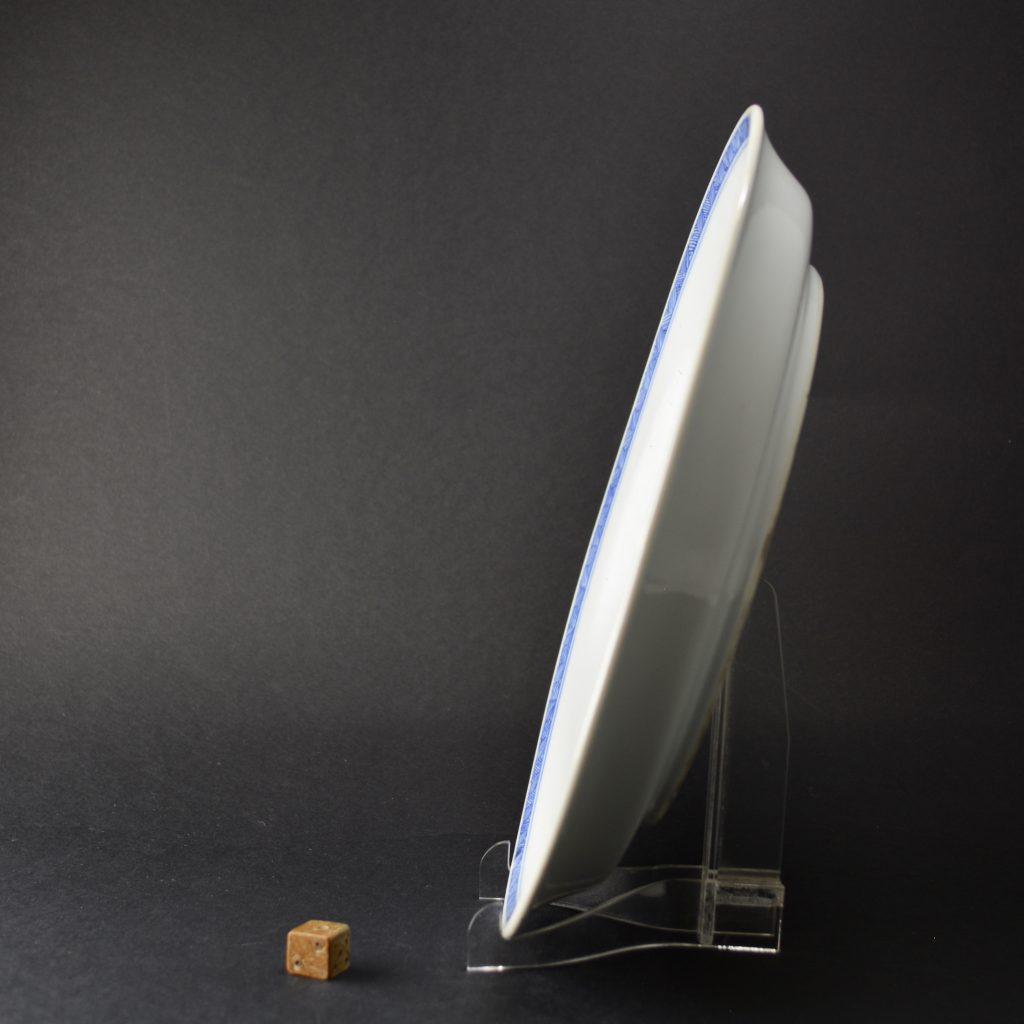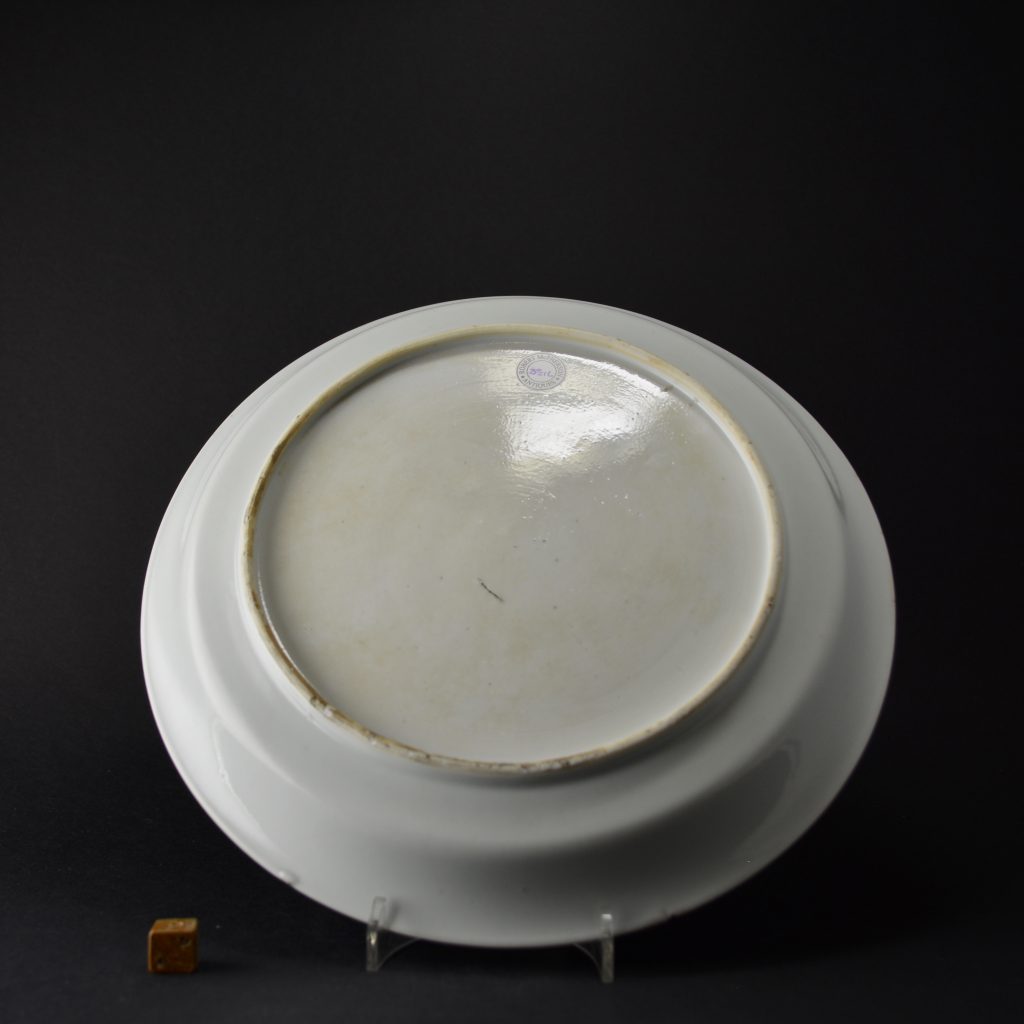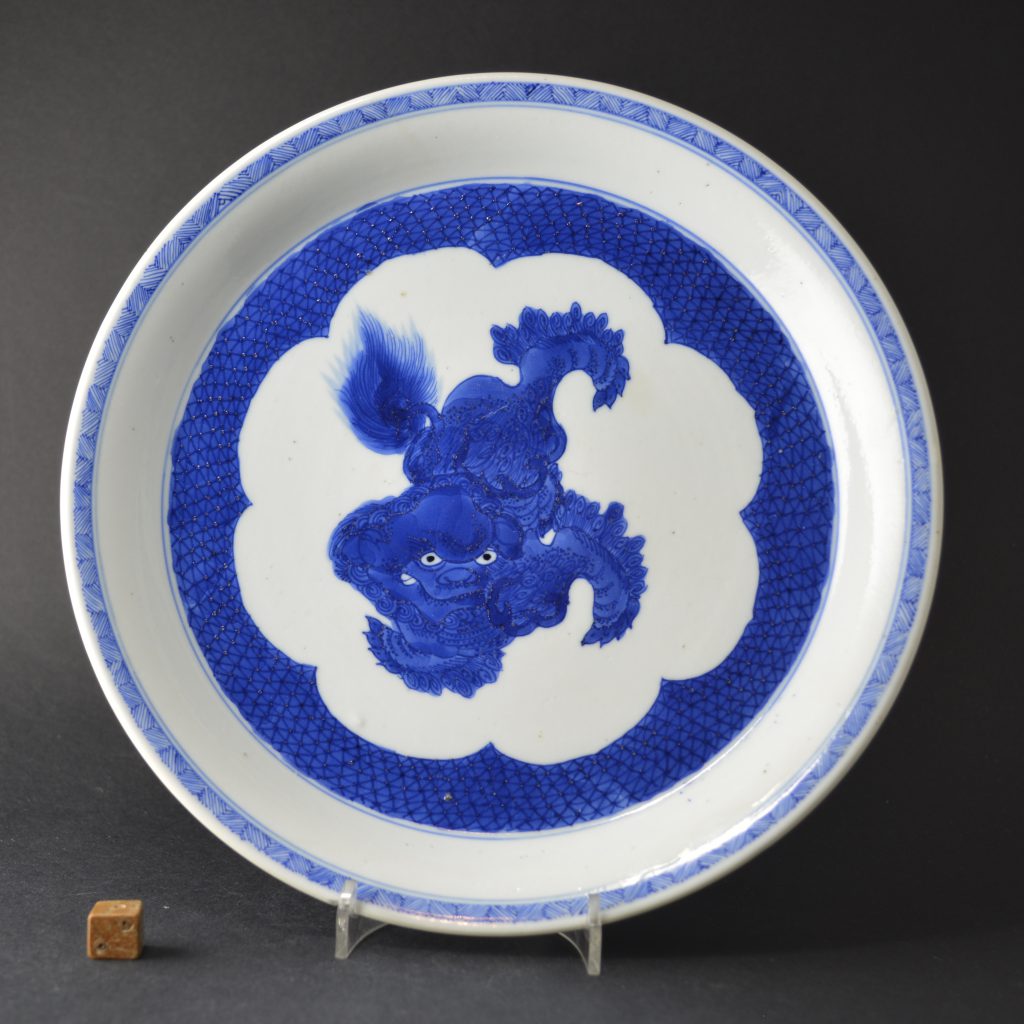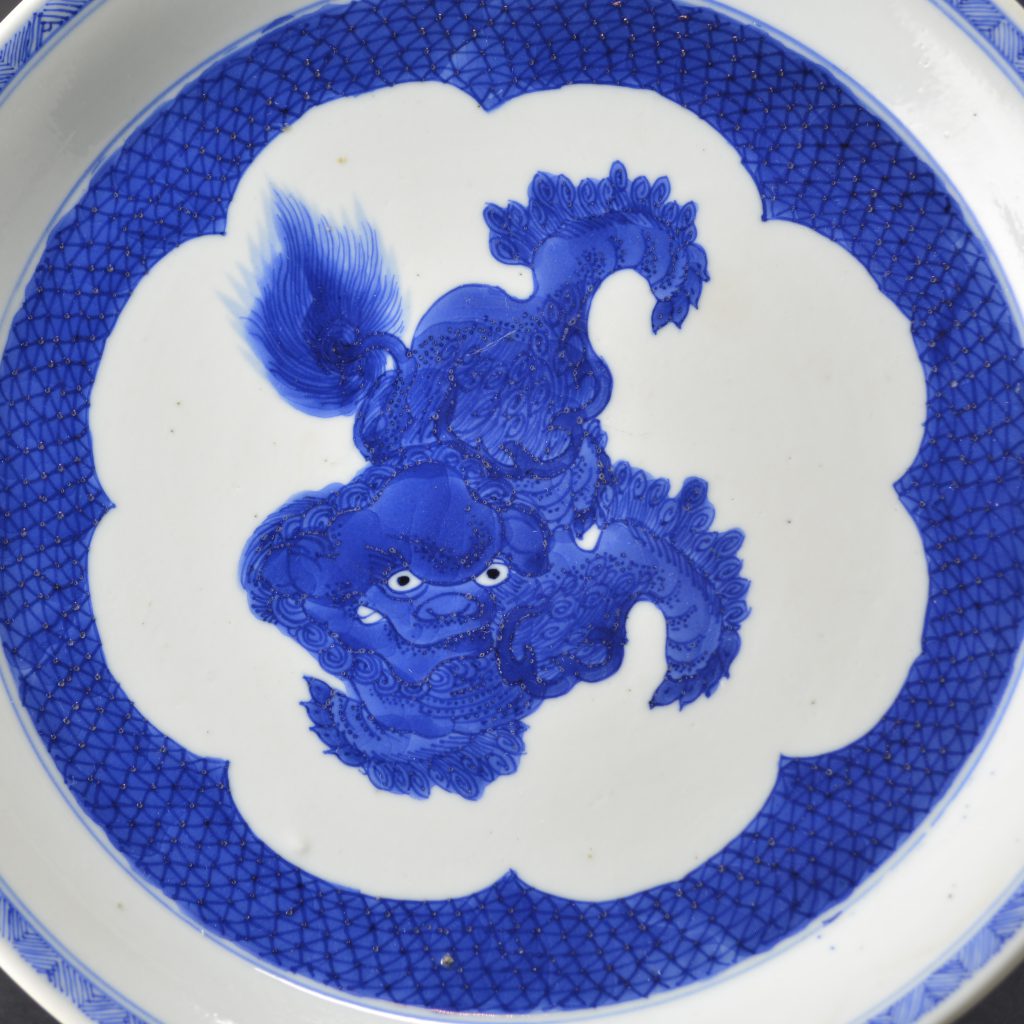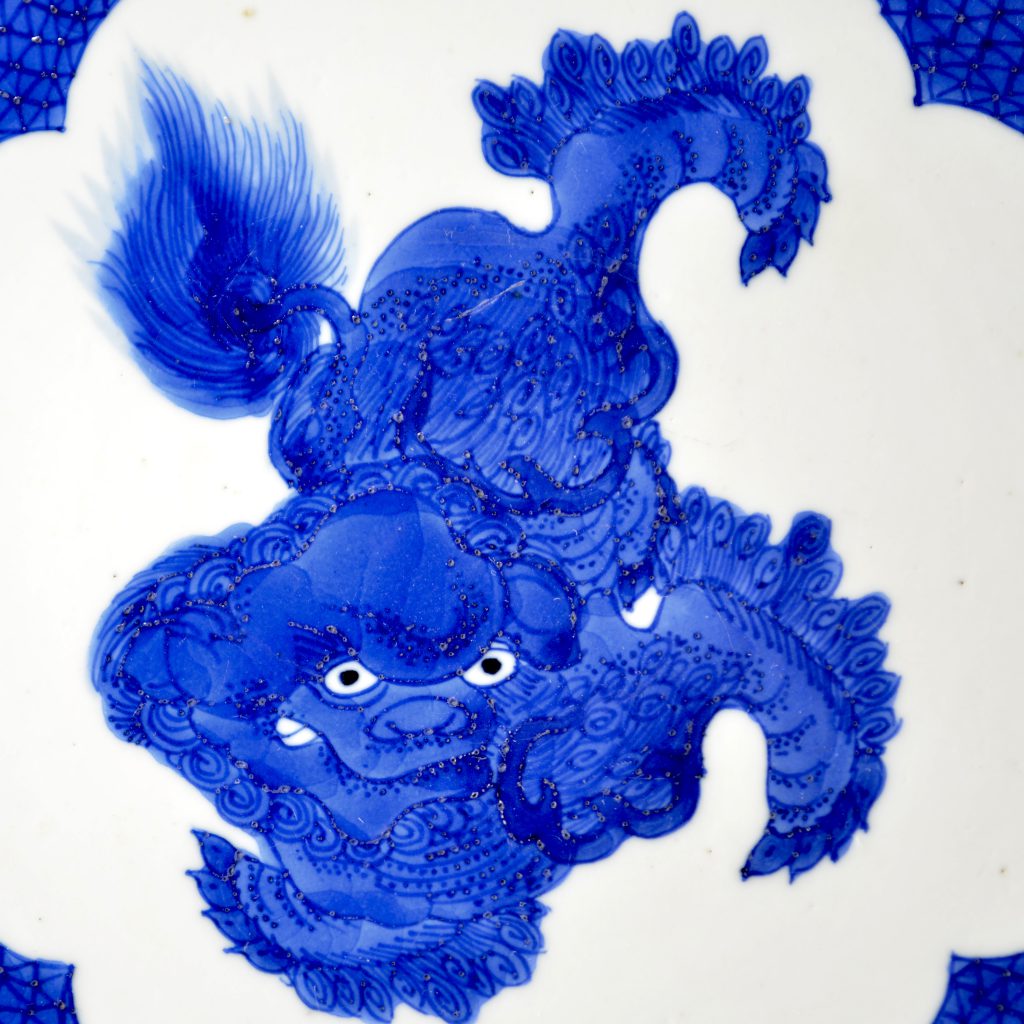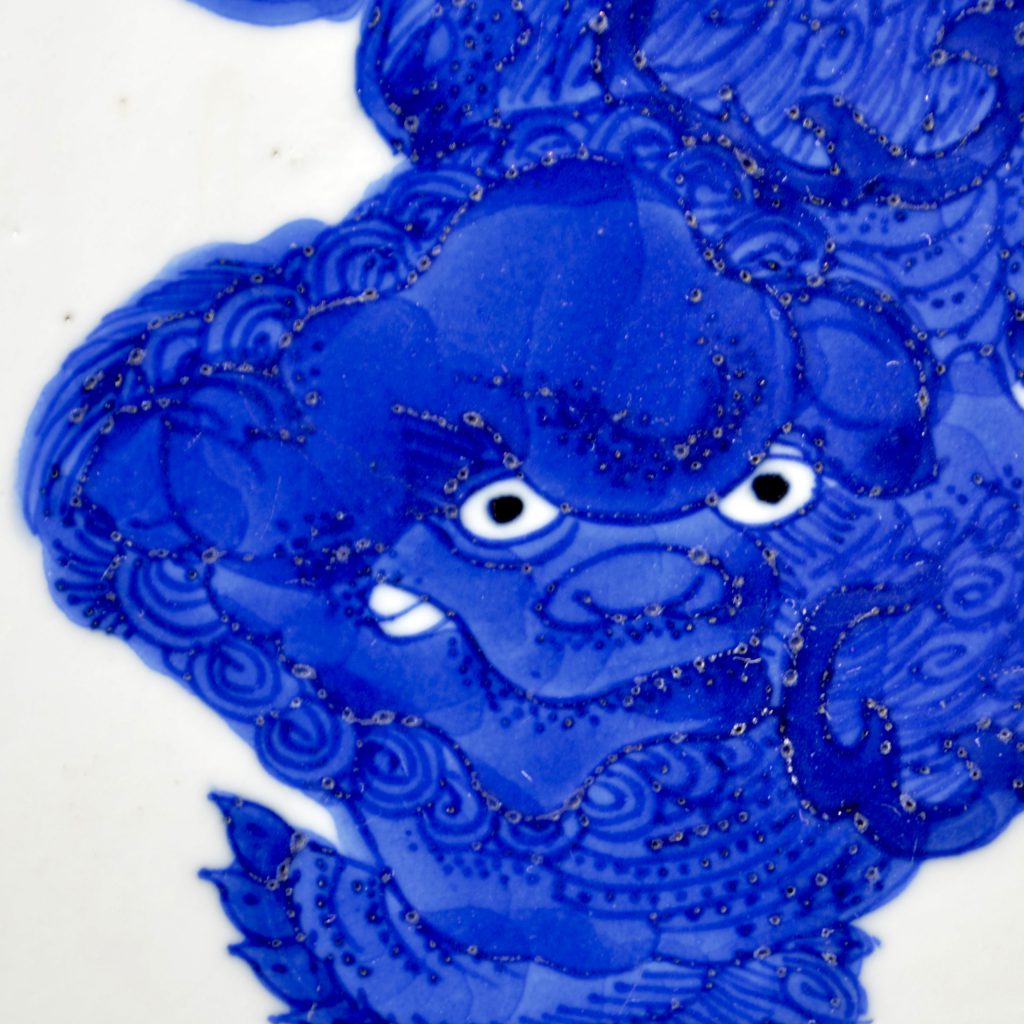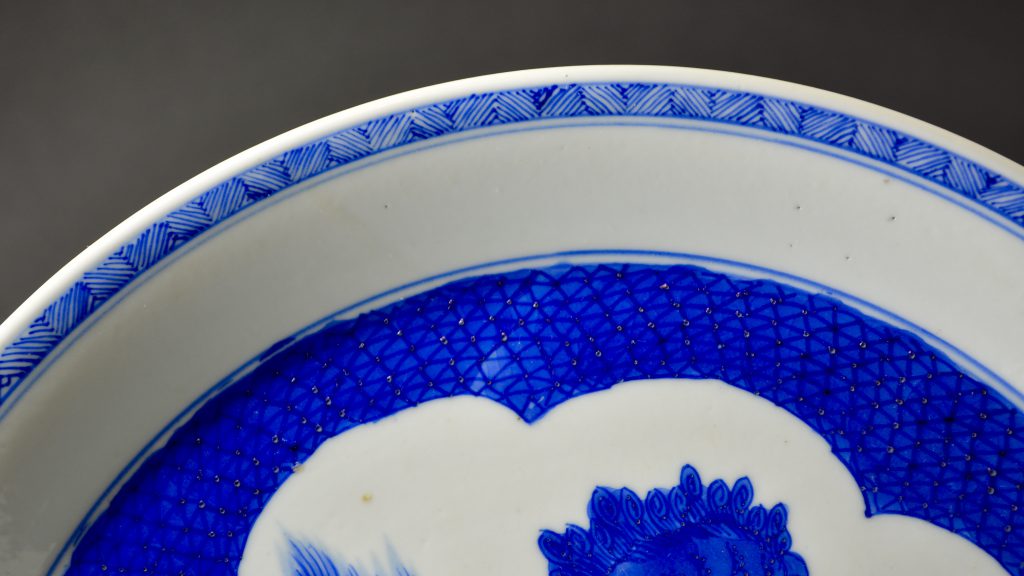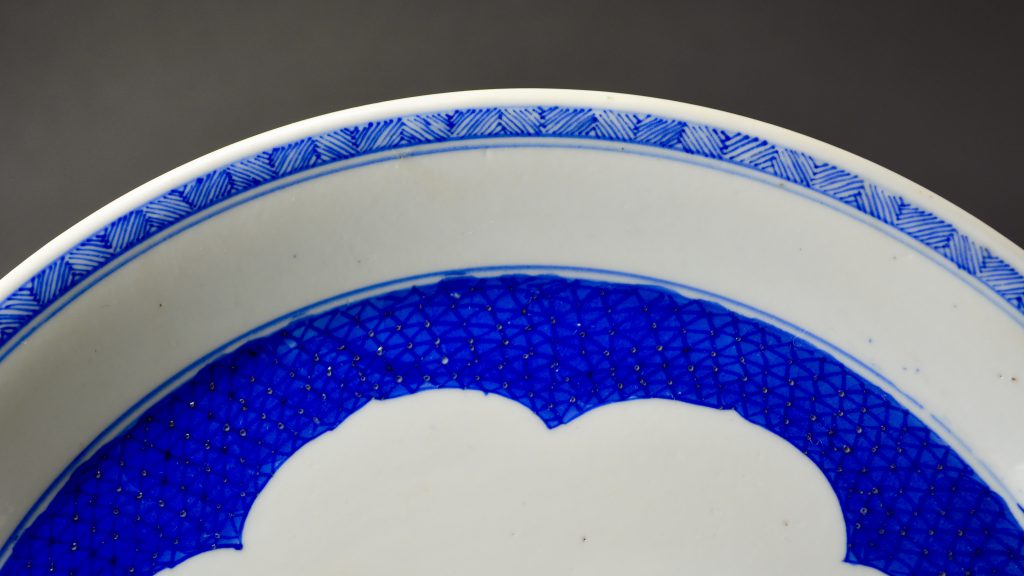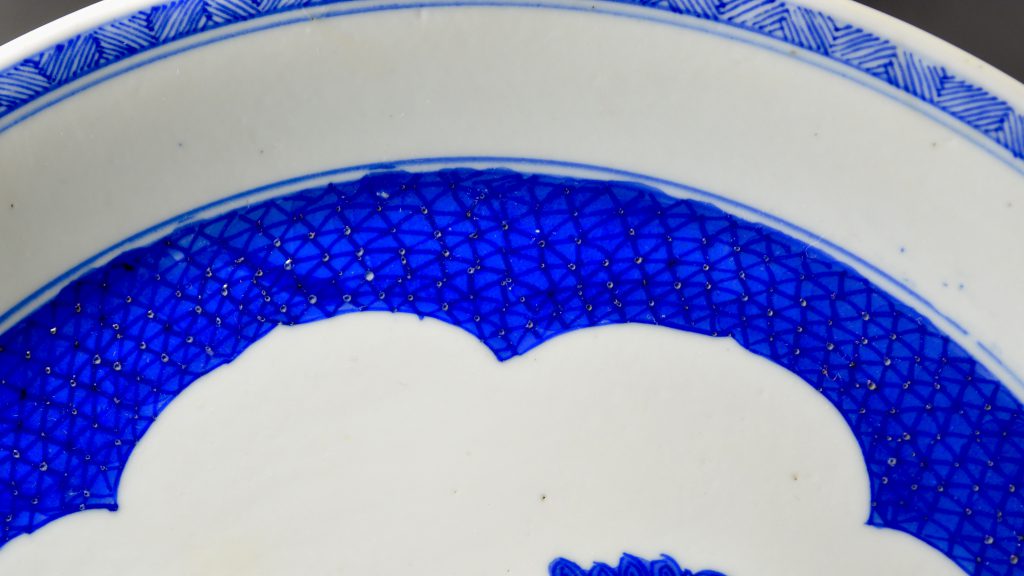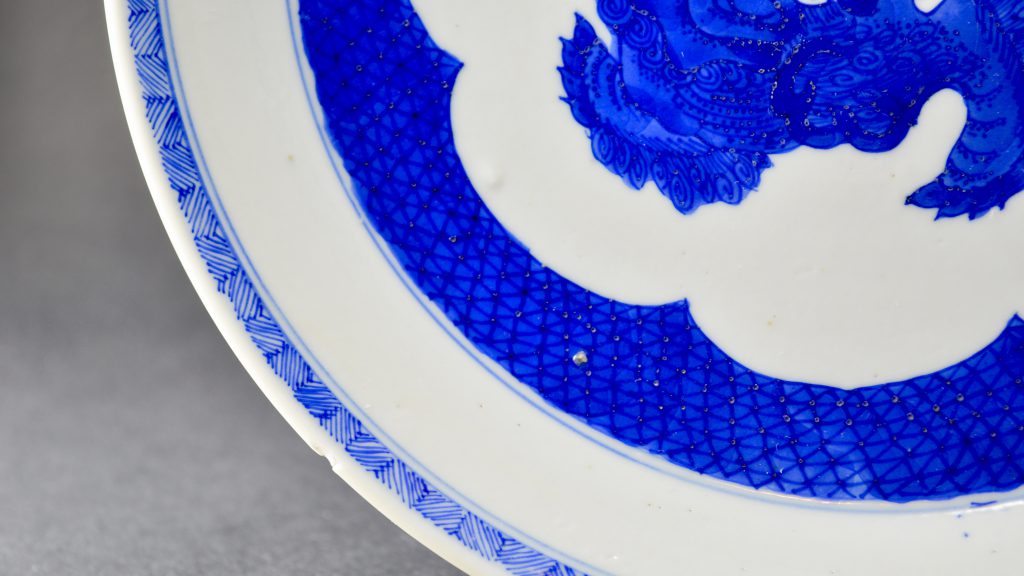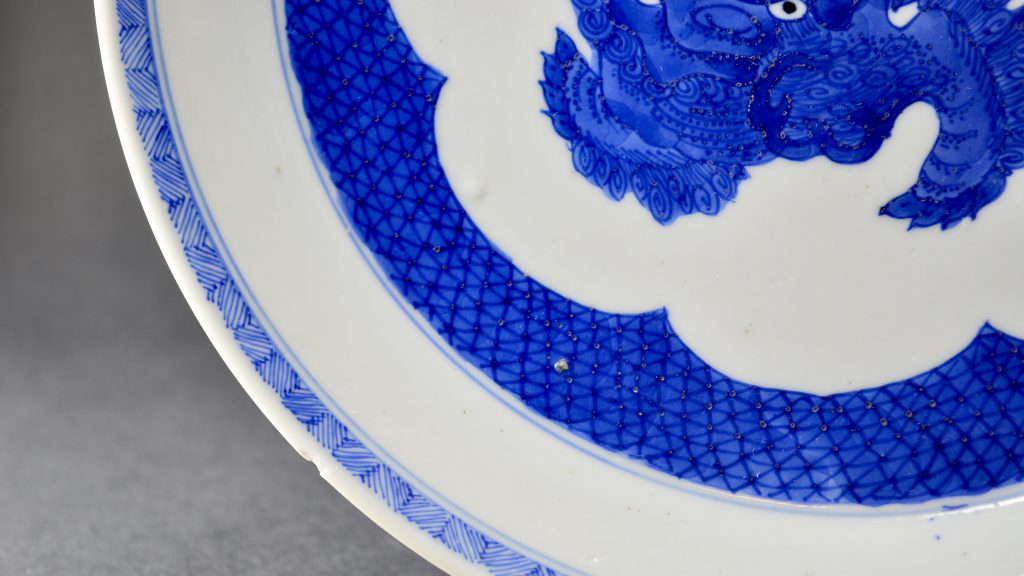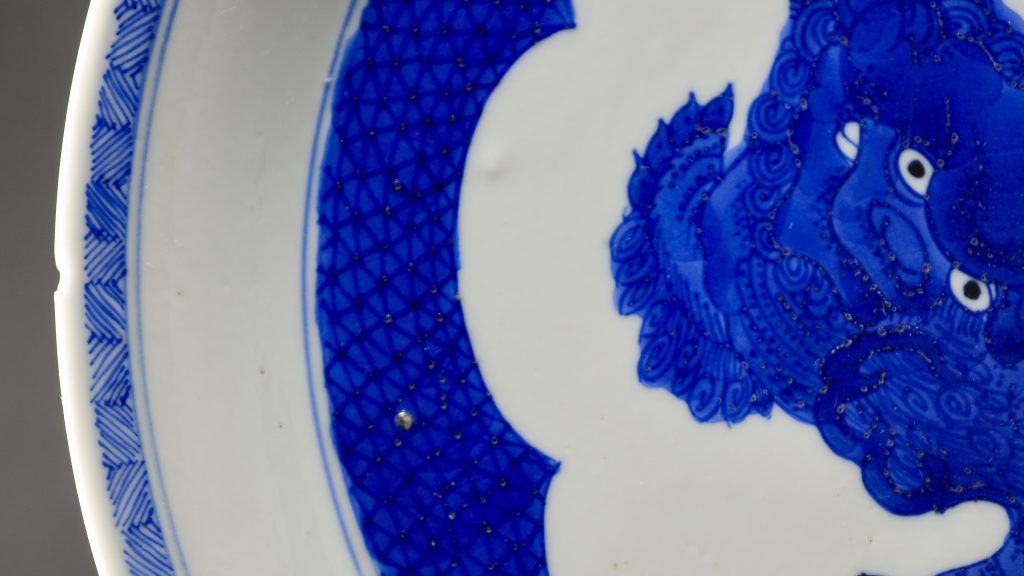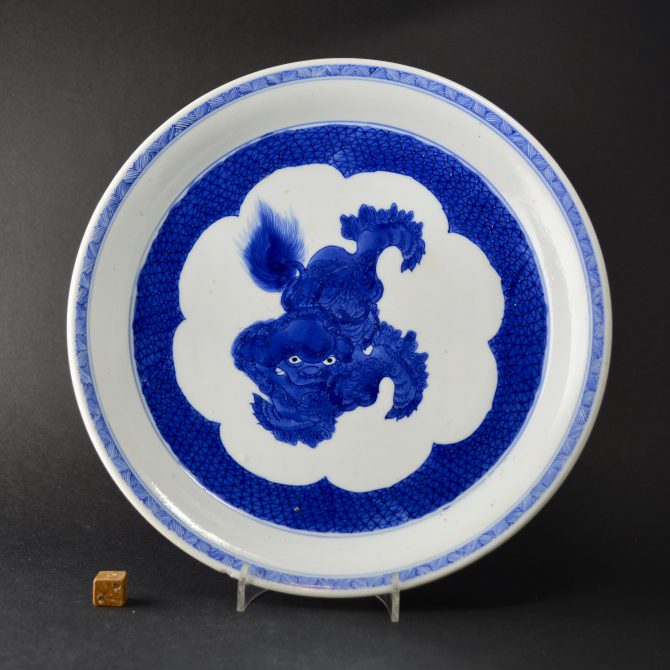
A Rare Yongzheng Porcelain Blue and White Tray c.1730
A rare Yongzheng Porcelain tray, Yongzheng Period 1723-1735. The thickly potted early 18th century Chinese porcelain tray is decorated in an exceptionally bright deep dense cobalt-oxide. The center is painted with a rather comical Fu dog looking directly at us. The form of this tray is quite well known, a number of examples appear with a later version of the ‘Master of the Rocks’ style of painting and as such are dated as being early Kangxi. Some have Chenghua marks but a few have a six character Yongzheng mark, to my knowledge none exist with Kangxi marks, so one has to assume that they were only made during the Yongzheng period. This is further substantiated by the quality of the porcelain and the type as well as manner of the painting. Perhaps these trays were used for wine cups but that is purely conjecture on my part.
SOLD
- Condition
- In very good condition, one smallrim chip (see the photographs).
- Size
- Diameter : 23.8 cm (9 1/2 inches)
- Provenance
- N/A
- Stock number
- 25216
Information
Fu Dog, Buddhist Lion or Fo Dog :
When Buddhist priests, or possibly traders, brought stories to China about stone dogs guarding the entry to Indian Buddhist temples, Chinese sculptors modelled statues after native dogs for use outside their temples. The mythic version of the animal, was known as the Dog of Fo, the word Fo being Chinese for Buddha. The Buddhist version of the dog was originally introduced to Han China as the protector of dharma and these dogs have been found in religious art as early as c.200 BC. Gradually they were incorporated as guardians of the Chinese Imperial dharm. However, Chinese sensitivity metamorphosed the dog into a lion, even though lions were not indigenous to China, since this seems more appropriate to the dignity of an emperor when he used the beasts to guard his gates. The mythic dog is sometimes associated with feng shui, and are often called Fu Dogs. Fu means `happiness` in Chinese; however, the term `Fu Dog` and its variant Foo Dog, are not used in Chinese. Instead, they are known as Rui Shi (`auspicious lions`) or simply Shi (lions). There are various styles of imperial guardian lions reflecting influences from different time periods, imperial dynasties, and regions of China. These styles vary in their artistic detail and adornment as well as in the depiction of the lions from fierce to serene.
